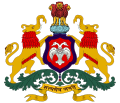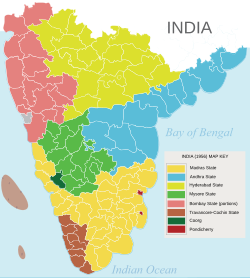Coorg State | |||||||||
|---|---|---|---|---|---|---|---|---|---|
Former State 1950–1956 | |||||||||
 Location of Coorg State in India | |||||||||
| Country | India | ||||||||
| Region | South India | ||||||||
| Formation | 26 January 1950 | ||||||||
| Dissolution | 1 November 1956 | ||||||||
| Government | |||||||||
| • Chief Minister | |||||||||
• 1952-1956 | C. M. Poonacha | ||||||||
| Time zone | UTC+05:30 (IST) | ||||||||
| |||||||||
| Part of a series on the |
| Culture of Karnataka |
|---|
 |

Coorg State was a Part-C state in India which existed from 1950 to 1956. [1] When the Constitution of India came into force on 26 January 1950, most of the existing provinces were reconstituted into states. Thus, Coorg Province became Coorg State. Coorg State was ruled by a Chief Commissioner with Mercara as its capital. The head of the government was the Chief Minister. Coorg State was abolished on 1 November 1956 as per the States Reorganisation Act, 1956 and its territory was merged with Mysore State (later renamed as Karnataka in 1973). [2] Currently, Coorg forms a district of Karnataka state.